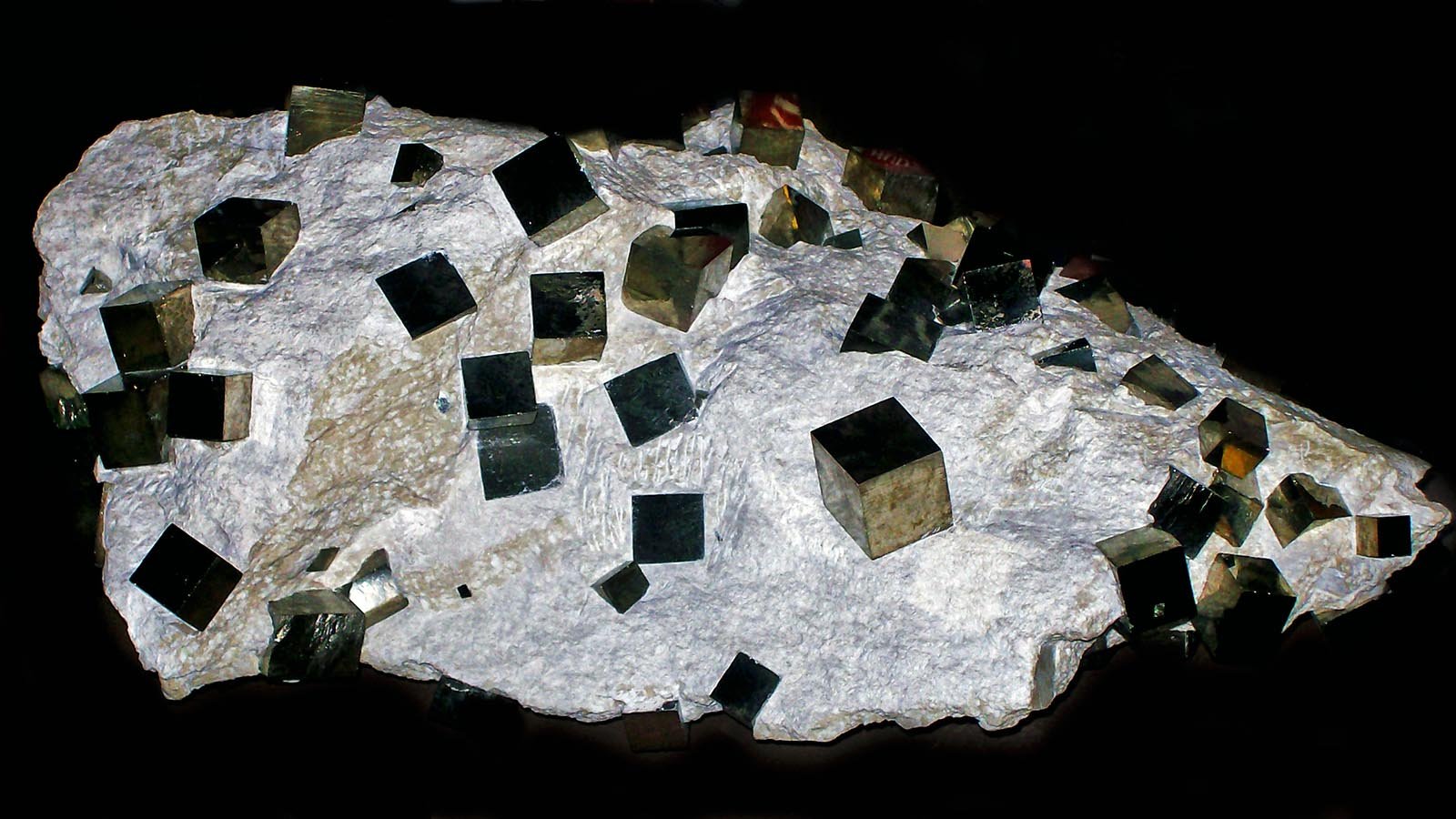JH Color Theory: Fool's Gold

On April Fool’s Day, an examination of nature’s lustrous trickery...
For centuries, the prospector’s quest for gold has often been accompanied by the glittering allure of a brazen knock-off: pyrite.
Often found dangerously close to actual gold in mineral deposits, pyrite is an element composed of iron and sulfur (aka: iron sulfide or FeS2*).
The name Pyrite originates from the Greek word “pyr,” or a ‘stone or mineral which strikes fire.’ When used as a kind of flint, striking pyrite sends sparks flying.
It was also favored by the Incas, who created mirrors by grinding fine stones against its surface until it was polished, creating a reflective finish.
With its shiny yellow color and metallic shine, pyrite is distinguishable from actual gold by its hardness, brittleness, and crystal form.
Gold-gold can also easily be cut with a knife, while pyrite breaks apart.
In 1578, one Sir Martin Frobisher lugged 1,350 tons of what he thought was gold ore across the Atlantic at the request of Queen Elizabeth only to discover most of it was worthless.
In a few tested samples, the gold content was only five to 14 parts per billion; not quite the gold rush he’d hoped for.
Pyrite isn’t a total scam; over time it has found many a practical use, including as a source of ignition; a semiconductor; used in radio receivers, solar panels, and in the production of sulfur dioxide.
Also, it typically forms in these wild cuboid crystals, which are admittedly...quite cool:










